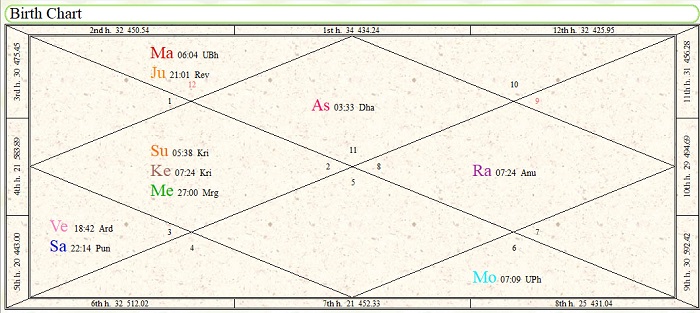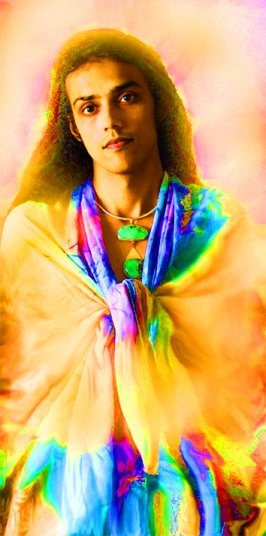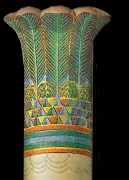 |
 |
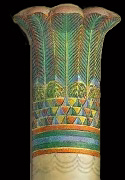 |
||||||||
Founders Course Books Readings 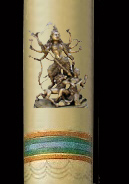 |
P TriVedi's Rasi Chart 1.†
Every natural malefic is with a natural benefic & that benefic also
happens to be its best friend. For example Mars is with its best friend
Jupiter and so forth† 2.†
All the friends form teams i.e
Jupiter/Mars/Moon & Saturn/Mercury/Venus. The Rahu Ketu axis separates the
friends and enemies with Sun, Mars, Jupiter on one side and Mercury, Venus,
Saturn on the other.† 3.†
The self (first house) is represented by all the archetypal male
energies. These male energies are Sky, Air, Lightning and Sun which are all
situated above the feminine Earth.†
Aquarius the electric air sign rises on the Ascendant. The Ascendant
lord Saturn is in a sky/space nakshatra Punarvasu and is conjunct Venus in
Ardra, a nakshatra closely associated with lightning.† The Sun is placed in Krittika a nakshatra
ruled by Sun and is strong in a quadrant house through its association with
Ketu (which increases a planets strength fourfold
through close conjuction).†††††† †††††
4.†
Mercury is the connecting point of the whole chart and is the atmakaraka
(soul significator).† Mercury is
connected with Venus through an exchange. Saturn and† Moon are in Mercuryís signs, Gemini
and Virgo respectively. Mercury is conjunct Sun and Ketu. It is related to Rahu
by aspect. It is related to Mars by being placed in its nakshatra Mrigashira,
and related to Jupiter by Jupiterís placement in Mercuryís nakshatra Revathi . So Mercury the atmakaraka and buddha/vishnu planet
is aptly the pivot of the chart.†††† 5.†
All the four elemental triangle lords are connected. For example the
first triangle is comprised of† 1st , 5th† and 9th† lords Saturn, Mercury and Venus who form a
team and the second triangle is comprised of 2nd, 6th† & 10th lords, Jupiter, Moon
and Mars who form another team. 6.†
Born at midnight (20th changing to 21st) in India, when it was midday (20th) at the temple in
ChichenItza. The temple was built to align perfectly for showing Sun's exact
conjunction with Pleiades, the central star Alcyone in the era 1970-2012.† 7.†
Mercury and Venus are the Quetzacoatel (coat of many colours) planets in
the chart, because they stick with the Rahu Ketu Serpent axis even in the
navamsha.† Venus in Gemini is the plumed
serpent, the archetypal Birdman.† The 4th
house represents vehicles in the chart, so Venus the 4th and 9th lord can be
seen as acting like the vehicle for Saturn, the Self significator.† Venus is thus playing a Garuda role. It is
placed in the shastiamsha Amrita, symbolic of how Garuda gets the nectar.† Saturn, the ascendant lord, acts as the
Vishnu planet. Vishnu is represented by blue, the colour of the sky.† punarvasu represents the sky, and Saturn
relates to the colour blue; the combination thus denotes a blue sky. punarvasu
is also related to the mother of humanity Aditi and Vishnu was born through her
as the avatar, Vamana. Vishnu is depicted as a blue being draped in golden
yellow.† This symbolises the blue sky
with a yellow Sun as clothing. So it is clear that Saturn is
representing Vishnu and Venus is representing Garuda (birdbrain).† Saturn (Vishnu) rides on the Venus (vehicle
and nectar).† Vishnu holds the wheel of
time (sudarshan chakra) with his right index finger. The right hand index
finger is represented by Jupiter in PT's chart, and is related to PTís right
hand through conjunction with the 3rd lord. The wheel of time is personified by
Jupiterís placement in Revathi (the Ďtimeí nakshatra).† 8.†
Shiv component of the chart can be seen through the sign Aquarius (aqua
vitae or waters of life), rising on the ascendant. The waters of life are
depicted as Ganga falling from Shivís hair.†
This can be seen as ultraviolet etheric Rain of perennial
consciousness.† Venus is related to the
Rudras or time lords, through its placement in Ardra. The Rudras are
embodiments of Shiv energy.† The fixed
signs Taurus, Leo, Scorpio and Aquarius all represent Shiv.† PT's entire chart is based on Mercury and
Venus exchange. Mercury in the fixed sign Taurus represents the Vishnu and
Shiv principle and Venus in the mutable sign gemini
also represents the Vishnu and Shiv principle. In PTís chart there are exactly 5 planets
in fixed signs (Shiv signs) and five planets in mutable signs (Vishnu Signs).
This combination results in perfect merging to produce Hari-Hara (half Vishnu,
half Shiv).† 9.†
Mars , the planet of blood, is in
Uttarabhadrapada an oceanic nakshatra. Oceans and blood have one important
thing is common ~ both are salty. So the planet of blood is in a nakshatra
representing oceans (Earth blood).† The
largets amongst earthís oceans is Pacific, which translates into Prashant in
Sanskrit. So the name Prashant is perfect† for this incarnation. Also the 2nd
house presides over the name of a person. 10.†
Our Sun revolves around Alcyone the central star of Pleiades. The Incas
and the Aztecs through their pyramids at Chichenitza established the date for a
precise conjunction between our Sun and Alcyone as 21st May.
Therefore the Sun in Krittika on 21st May would be the accurate
representation of Sun (solar system) connecting with its galactic counterpart. †† 11.†
Garuda (the bird brain) requires a Turtle & Elephant to satiate his
hunger. The turtle is an uttarabhadrapada animal, whilst the elephant is a
revati animal.† The 2nd house relates to
eating and is occupied by the planets Mars & Jupiter placed in
uttarabhadrapada and revathi respectively. 12.†
The chart as a whole represents the churning of the ocean story. Jupiter
and Mars are in the sign of the ocean, Pisces. Jupiter is representing the
churning through Revathi. Revathi relates to the wheel of time, a wheel that
goes round and round like a churning rod. Mars is in Uttarabhadrapada, the
nakshatra representing the tortoise. In the story Vishnu assumes the form of a
tortoise to support Mt Mandhara. Moon in Uttara Phalguni represents the axis of
the churning, and is in straight relation to the Mars turtle, as Moon and Mars
are exactly 180 degrees apart. Moon represents the seat of Brahma. Rahu and
Ketu are representing the serpent used in the churning. The serpent is
positioned at a right angle in respect to the axis. The devas
represented by Sun and Mercury are holding the tail Ketu. Sun is placed in
Krittika which relates to the asterism Pleiades. So Pleiades becomes
representative of the Devas (righteous ones). The nectar which comes out of the churning is
represented by Venus as it placed in Amrita Shashtiamsha. Vishnu assumes the form of Mohini
in this story to keep the unrighteous from gaining the nectar. It is interesting
to note that PT was born on Mohini Ekadashi ... ††† |
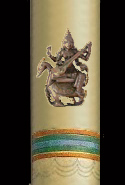 |
||||||||
